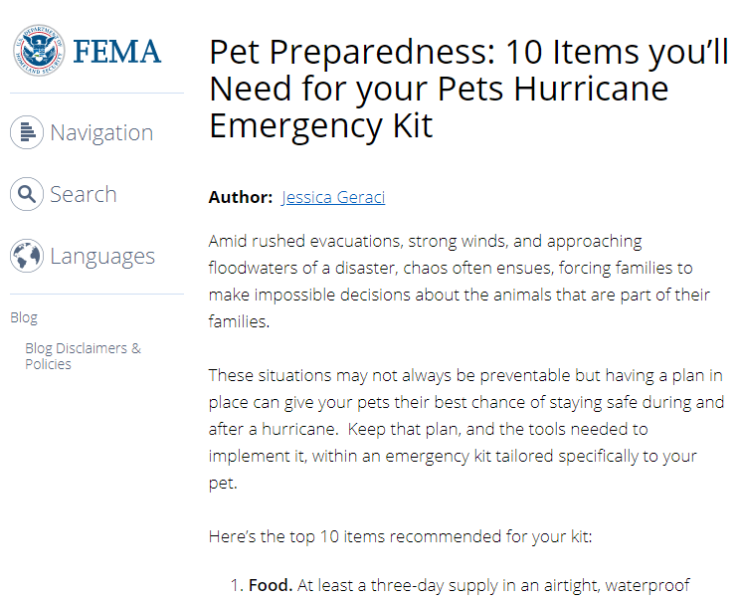Building top-funnel content to influence bottom-funnel pages (with real example)
Each page on your site should have a purpose, and if you are strategic, your pages can support one another and your overarching business goals.
Wouldn’t it be great if every page on your site led directly to a sale or conversion? Or if all it took to convince someone to purchase from you was to have them land on your website? Or if money grew on trees?
We all know these scenarios are ridiculous…but I still see site owners and marketers focusing solely on converting pages.
Every page has a unique purpose and not all pages should be converting pages. Some examples of other goals your pages might serve include:
- Presenting key employees and leaders
- Defining your brand, culture and beliefs
- Explaining your company’s unique systems and processes
- Attracting large, top-funnel audiences through organic search
- Informing and educating your audience about an important topic in your niche
- Etc.
For the most part, pages that serve these goals won’t be the pages where your audience converts. However, these pages all support the overarching goal of increasing conversions.
Similarly, not all pages are equally link-worthy…and they don’t all need to be.
Link-worthiness or linkability is generally related to the size of the audience a given page serves. Your product pages have limited link-worthiness because they serve a smaller audience of people who are ready to purchase. For example, more websites would link to a page that explores the rich history of soccer and the World Cup than a page that sells soccer jerseys.
Of course, you still want your product pages ranking for the terms that describe them and that means you need backlinks. However, because the link opportunities for bottom-funnel pages are inherently limited, you’ll need to get a bit more creative in how you cultivate link equity for these pages — enter linkable resources and internal links.
In this post I’ll walk you through the process of finding linkable topics, creating link-worthy pages and optimizing internal links, and promoting those pages to influence visibility for your bottom-funnel pages. I’ll even share a recent project where we executed this exact strategy and saw great results.
Let’s get started!
Finding linkable, top-funnel topics
The first — and most important — step to influencing bottom-funnel pages with top-funnel content is identifying the right topic. The reason this step is so critical is that you will be investing a lot of time and energy into building and promoting this page, and you want to make sure the topic has legs before you start down that path.
The first place to start this process is with competitors — which pages are their top linked pages? What types of topics are they covering? Are they speaking to an audience you’re ignoring on your site?
There is much to be gleaned from competitor content and how they’re earning links. If a competitor has a guide about [X Topic] that has over 100 links, and you don’t address that topic on your site, this is likely a topic you should cover as it has proven linkability. You should also keep a list of these linking sites, as they will likely be open to linking to the page you eventually create.
In fact, even the pages that don’t have a ton of backlinks could be potentially linkable topics, but your competitor might have failed to promote their page properly. Explore the SERPs for these pages and their associated keywords to see if the ranking guides have a substantial amount of referring domains — just because your competitor missed on this opportunity doesn’t make it any less of an opportunity.
If you still can’t find any promising ideas after researching competitors, broaden your search to analyze websites that may not be direct competitors, but are still creating content within your space and ranking in relevant SERPs. The “Related Pages” tab in Majestic can be a great way to find these sites or you can use the “Organic Competitors” section in SEMrush to find sites that share similar keywords.
Government agencies and websites, believe it or not, can provide linkable topic ideas as well. These sites can provide a solid jumping-off point as they won’t cover a topic unless there is a legitimate need for that topic to be covered. For example, this article exists on the FEMA blog:

If you have a website that sells pet supplies, you now have a potentially linkable topic — “How to Keep Your Pets Safe During a Disaster: A Comprehensive Guide.” While the FEMA article only covers creating a hurricane emergency kit, it provides a starting point and demonstrates that people care about protecting their pets during a natural disaster (and would link to a quality guide on the subject).
The key is to keep an eye out for topics or audiences that have a proven record of being link-worthy, and then brainstorming ways to adapt that topic to mesh naturally with your products or services. It’s important that you find topics that align with your brand’s expertise as well — would an audience trust your advice on this topic?
Using our pet example again, you could reasonably expect PetSmart to know which products would be essential during a disaster situation, but you probably wouldn’t want their advice on how to protect your home during a disaster.
Believability is a big part of link-worthiness and you want to cover topics that you can reasonably be considered an expert for.
Execution and promotion
Once you have a proven idea, you need to create the page.
If you’ve done your research upfront, this process should be straightforward as you already have the blueprint for a successful page (either from competitors or other authoritative guides). Build your guide in sections to address each sub-topic as its own header and section, making it easy for readers to find the information that is most important to them quickly.
Furthermore, if you include anchor links, this opens the door to even more link opportunities as you can pitch a specific section of the guide that is hyper-relevant to potential link partners.
The most critical part of this step is naturally linking to your converting, bottom-funnel pages within your guide via internal links. The emphasis should be on “naturally linking,” you want your internal links to make sense contextually and seamlessly fit within the overarching topic.
Building these internal links is a vital step as these links will direct both visitors and link equity to your converting pages, helping them rank better in organic search.
Promotion should be straightforward as well, as you should already have a list of link prospects from your ideation phase (the sites that linked to the page you drew inspiration from). Link building is much easier when you identify potential linking audience before content creation and then design that content to serve those linking audiences — all that’s left to do is reach out to the appropriate websites.
Improving keyword rankings for converting pages with top-funnel, linkable content
Now that we’ve walked through the process of ideation, creation, and promotion of link-worthy pages, let’s look at a real example of how this strategy can influence visibility for your converting pages.
This project was for an ecommerce client who wanted to improve US-based keyword rankings for the head terms associated with their primary services.
Since the client’s target pages were bottom-funnel pages (not highly linkable), we created a guide for safe online shopping that would appeal to a broad but relevant audience, and internally link to their goal pages. The strategy paid off as the resource quickly earned relevant links (over 10 in the first two months) and began influencing rankings for the client’s converting pages.
In just three months, the client saw the following movement for their head terms:
- Primary Keyword (most competitive): Up one position (on page one)
- Secondary Keyword: Up 24 positions (from page four to page two)
- Tertiary Keyword: Up 11 positions (from page two to page one)
These are conversion-oriented keywords that lead directly to increased revenue, and these types of gains would not have been possible without the link equity earned through the resource we created.
Again, it’s not impossible to secure links to bottom-funnel pages, but it’s very difficult to scale link acquisition for these pages to a level that moves the needle. However, top-funnel resources can sustainably earn links and through internal linking, you can leverage these resources for the betterment of your bottom-funnel pages.
Each page on your site should have a purpose, and if you’re strategic, your pages can support one another and your overarching business goals.
Opinions expressed in this article are those of the guest author and not necessarily MarTech. Staff authors are listed here.
Related stories
